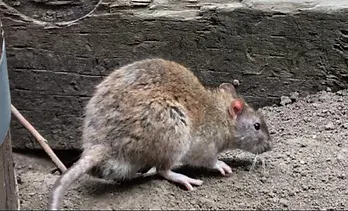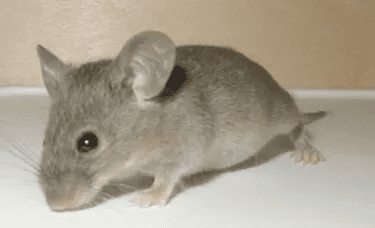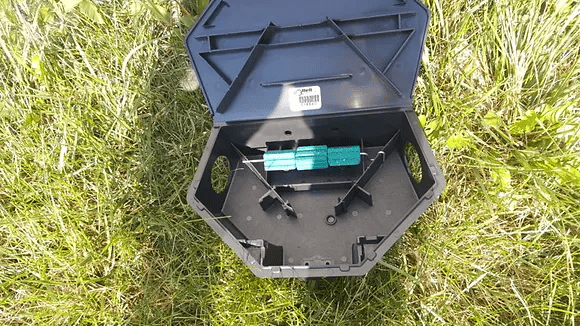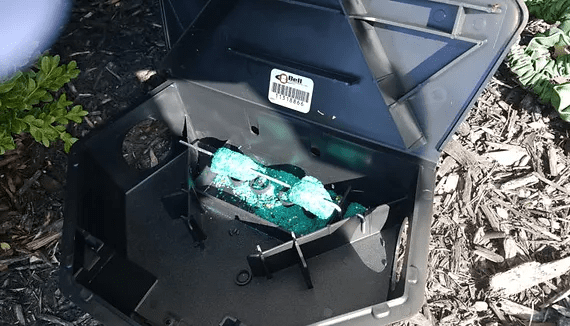Rodent Library
WHY AM I SEEING MICE OR RATS?
Mice and rats will seek shelter during sudden changes in weather patterns. As temperatures go into the extreme lows and high, mice and rats can be expected to seek shelter inside buildings. Once inside these pest can quickly multiply, building nests in attics, walls, crawlspaces, furniture, air vents and in many other areas inside. It important to not allow rodent populations to progress as mice or rats can cause gnaw damage. Most common rodent gnaw damage can be seen on walls, home electrical wiring, vehicle wiring, plumbing, furniture. Also, with rodent infestations come diseases and bacteria. Rodents can quickly contaminate surfaces and ambient air inside buildings, leading to respiratory health illnesses and diseases.
If you are hearing squeaks inside the wall, attics, vents or even scratching noises you may have a mice or rat infestation.
While there are plenty of products, traps and home remedies available to help get rid of mice and rats contacting professional help still remains as the best option for successful control and elimination of vermin. Getting rid of these unwelcome visitors over winter is extremely important, as they began multiplying indoors and can quickly damage and contaminate buildings. When the cold winter days arrive to Kansas and Missouri, everyone wants to be inside in the warmth and so do mice and rats.
In fact, mice and rats can rapidly contaminate food storage areas and cause substantial damage to building and vehicle wiring. Mice and rats most commonly make their way into buildings through poorly sealed doors. The most common areas where mice problems began in a home are inside garages, attics, basements and kitchens. After a short period of time rats and mice began multiplying.
Health Concerns
Rats and mice can pose a real threat in a home. In some reported cases mice dust from droppings, urine and saliva airborne particles can lead to Hantavirus Pulmonary Syndrome (HPS) which reports 50% fatality in all reported cases. Researchers at Johns Hopkins Children’s Center and published in the Journal of Allergy and Clinical Immunology found that of 100 inner-city bedrooms of children with asthma, 84 percent had detectable levels of airborne mouse allergen! Mice are not so innocent!
Health risks associated with rats and mice
- Allergies
- Asthma symptoms (wheezing, difficulty breathing, etc.)
- Full-blown asthma attack
- Asthma-related illnesses
Seek professional help to eliminate mice or rats, we are one phone call away. Call us for FREE Advice and schedule your service today. Same day service available.
Quick Tips
- Place all dog, cat, bird food inside enclosed containers
- Do not leave food out over-night
- Ensure all entry door seals are not broken including garage door seals
- Ensure exterior openings where plumbing comes into the house is sealed and there is no access gaps allowing rats and mice to freely enter the building
- Always maintain garage doors down if not in use
If you suspect any activity please contact us for free advice. Our inspections are free of charge and we can quickly find the solution.


Norway Rat
Description: This rat was unintentionally introduced by European settlers to North America. It is a large rodent growing to approximately 18-19 inches in length. Ears and tail are bald and males are larger than females. Norway rats can be found anywhere there is people and are most seen old buildings like barns also basements, ponds, ditches, sewers, open fields, wooded areas and dumpsters.
Norway rats can easily be found near bodies of water and are great swimmers and climbers.
Adult Norway Rat droppings average 3/4 inch in size.
Diet: Omnivorous. They will eat just about anything including, dead animals.

House Mouse
Description:The house mouse has a pointed nose, rounded ears, a long hairless tail and can grow 3-4 inches in length. The house mouse has a gestation period of 19-21 days and begin exploring surrounding environments at ages 3-4 weeks old. The house mouse can produce up an average of 13 litters per year and each litter of approximately 6 young. The House Mouse can be found in residential and commercial establishments mainly feeding of seeds and nuts and other available food sources as they are opportunistic feeders and can eat just about anything. These mice pose a greater threat for contaminating human food supply and can lead to children asthma if children come in contact with droppings.
The House Mouse walks, runs trailing against a vertical surface and often their droppings will be near base-boards or near a vertical surfaces.
Lifespan: On average 1 year but can live 2-3 years in less threatening environments.
Mouse dropping: House Mouse droppings are cylindrical approximately 1/8-1/4 inch in length
Exterior Rodent Bait Stations
Proven technology to stop mice or rats from ever making it inside! Placement of exterior rodent baits station is the most effective method for controlling rodents. Bait stations are tamper proof, once bait station is closed a key is required to re-open bait station.

Opened Bait Station- Fully Baited Sample

Opened Bait Station- Fully Baited Sample